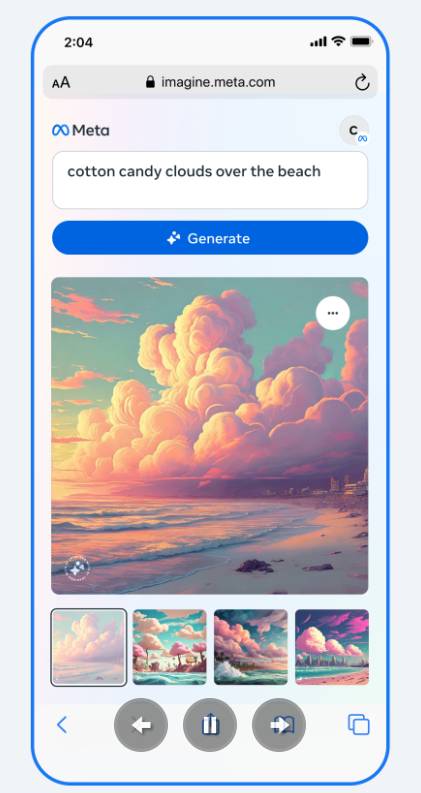Meta’s Innovative Approach: Deploying Invisible Watermarks to Safeguard AI-Generated Images
Meta, formerly known as Facebook, recently unveiled plans to introduce an invisible watermark will be added on all images generated by the AI-generated images to enhance security, transparency and traceability.
This watermark, although invisible, would remain even if you try to abuse the system by cropping the image.
The Invisible Watermark Initiative
This invisible watermark will be applied to images created by Meta AI including the “imagine with Meta AI experience”. If all this sounds like gibberish to you, let me explain.
The “Imagine with Meta AI” feature, nestled within the chat section, enables users to transform text prompts into AI-generated images. These images are brought to life using Meta’s image foundation model, Emu.
Basically, when you’re chatting with someone on Meta and you want to make it interesting, you can create AI-generated images using any prompt with this tool lah.
Beyond chats, users can also create pictures using this feature on Meta’s newly launched site.

Meta seems to aim to prevent the misuse of this tool. The invisible watermark will be added to these generated images using a deep learning model. This watermark is invisible to the human eye but can be detected with their corresponding model.
Unlike traditional watermarks that can easily be manipulated or removed, this invisible watermark remains resilient in the face of common image manipulations such as cropping, colour adjustments and screenshots.

Meta states that in the future, they aim to use invisible watermarking to many of their products which features AI-generated images.
The Misuse of AI Technology
It is unsurprising that Meta aims to place watermark given the increasing misuse of AI technology. Instances of fraudulent content, including fake images and videos, have surged.
Take for example, this peculiar yet amusing deepfake video of Taylor Swift speaking in Mandarin, created using AI powered video generator from Chinese start-up HeyGen.
@gonghonglei
Seems realistic, doesn’t it? This AI generator is equipped with over 300 voices, more than 40 languages and over 100 AI avatars of different ethnicities and clothes for users to play around with.
Deepfake videos had even infiltrated the realm of politics.
In 2022, amid the Russia-Ukraine war, a deepfake emerged, spreading misinformation. This deepfake video depicted Ukrainian president, Volodymyr Zelensky, in a green sweatshirt, announcing the end of the war which was obviously far from the truth at that point of time.




